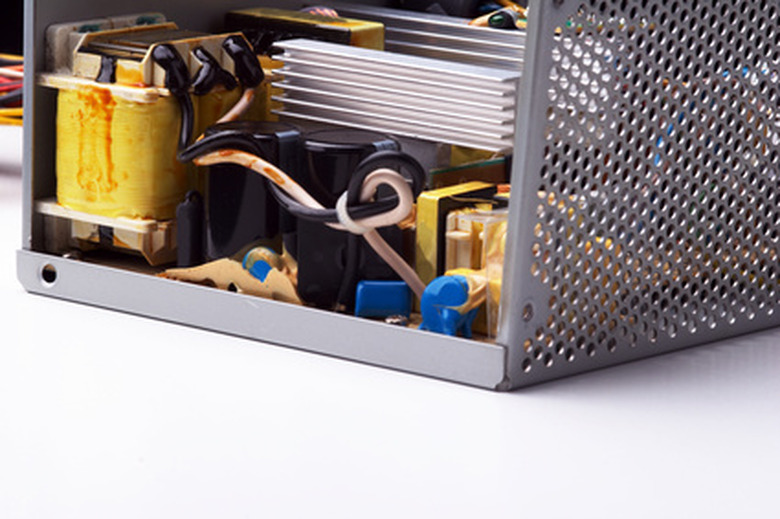How To Make A DC Voltage Regulator
Voltage regulators help control or regulate the voltage through electrical devices such as AC power supplies. AC power supplies have fluctuations that occur as a result of switches opening or closing, or lightning. DC voltage regulators supply reference voltages that help stabilize these variations.
To make a DC voltage regulator, use a linear monolithic IC regulator. They are lightweight, inexpensive, and are able to output stable reference voltages. They are also relatively sturdy for their size. IC voltage regulators have three terminals or pins that are usually connected to capacitors in order to control ripple or fluctuations.
Step 1
Determine the output voltage and power requirements that you need and select an IC voltage regulator on that basis. For example, if five volts is needed, choose an LM7805 voltage regulator, which has an output of five volts. The LM7806 IC has an output of six volts. Both can handle load currents up to one amp.
Step 2
Use the data sheet and study the specifications and pinout for the IC regulator. The 78xx series requires the input voltage to be at pin one, and the output to be at pin two. Since there is a voltage drop of two to three volts when it is in circuit, the input must be two to three volts greater than that of the output.
Step 3
Connect the positive end of the power supply to one end of the 0.22 microfarad capacitor. A larger capacitor may be used if necessary.
Step 4
Connect pin one of the IC regulator to the same side of the capacitor that is attached to the power supply. Wire the free end of the capacitor to ground.
Step 5
Add a wire and connect pin three to ground. Pin three is normally connected directly to ground, though occasionally a resistor is used to help adjust the voltage output.
Step 6
Add the 0.1 microfarad capacitor by wiring one end to pin two, and the other end to ground. Attach the negative side of the power source to the circuit.
Step 7
Turn the power supply on. Place the multimeter on DC voltage and measure the output from pin two. The amount should approximate the reference voltage of the IC regulator, such as five volts or six volts.
Things Needed
- 78xx series IC voltage regulator
- 78xx IC data sheets
- 0.1 microfarad capacitor
- 0.22 microfarad capacitor
- 12-volt power source
- Digital multimeter
TL;DR (Too Long; Didn't Read)
Monolithic IC chips may need external heat sinks to keep from overheating.
The capacitors used to control ripple may vary in value, such as from 0.1 to 1 microfarad, depending on the needs of the circuit.
Warning
Semiconductors are sensitive devices; do not exceed the power, current and temperature ratings specified by the manufacturer.
Always exercise caution when building electrical circuits to avoid burning yourself or damaging your equipment.
References
- "Electronic Principles"; Albert Malvino; 1999
- "Getting Started in Electronics"; Forrest Mims III; 2000
- "The Art of Electronics"; Paul Horowitz and Winfield Hill; 1997
Cite This Article
MLA
Lewis, Kim. "How To Make A DC Voltage Regulator" sciencing.com, https://www.sciencing.com/make-dc-voltage-regulator-6039230/. 24 April 2017.
APA
Lewis, Kim. (2017, April 24). How To Make A DC Voltage Regulator. sciencing.com. Retrieved from https://www.sciencing.com/make-dc-voltage-regulator-6039230/
Chicago
Lewis, Kim. How To Make A DC Voltage Regulator last modified March 24, 2022. https://www.sciencing.com/make-dc-voltage-regulator-6039230/
